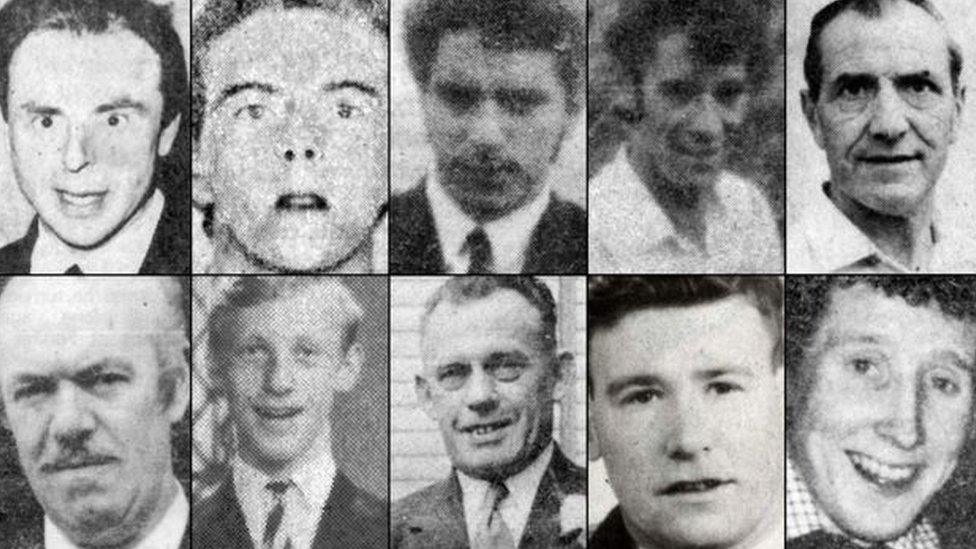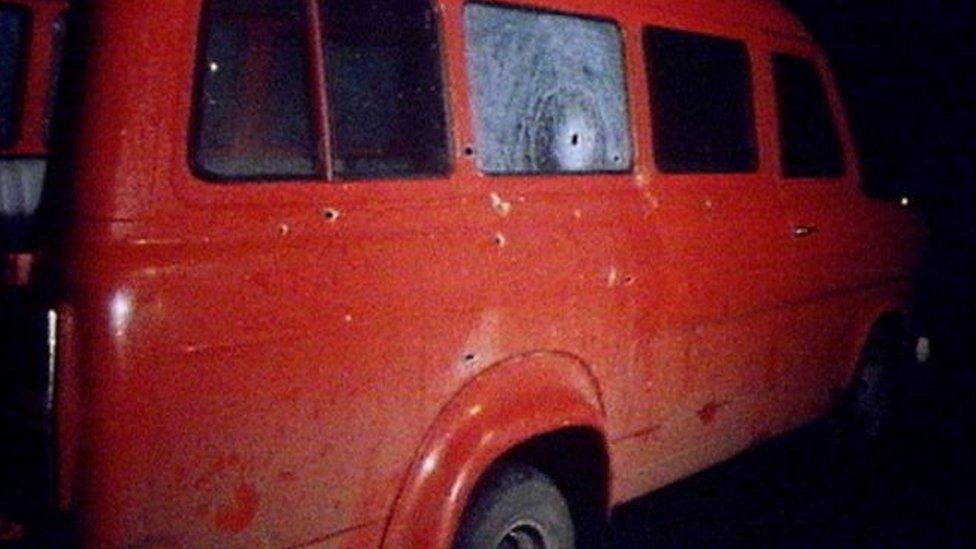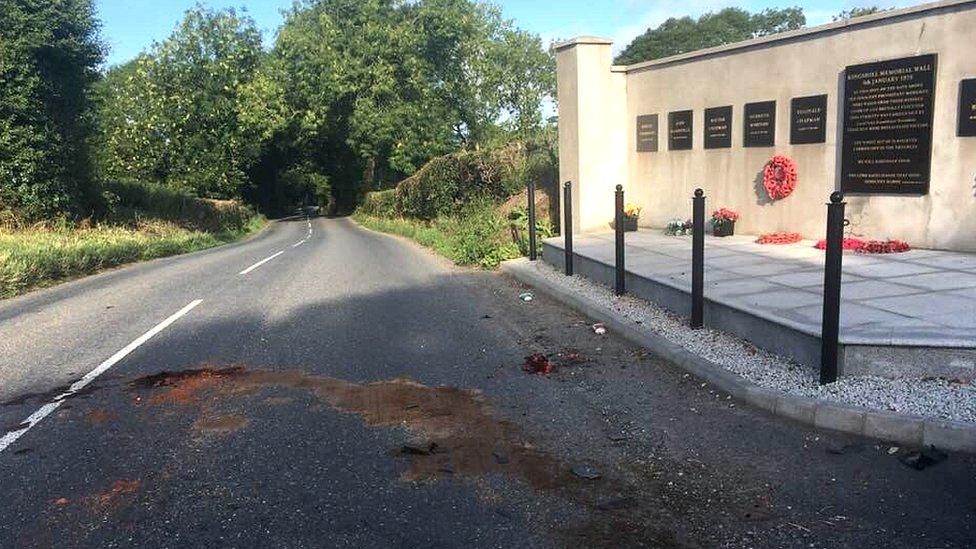Kingsmills: Errors blamed for failure to trace palm print
- Published

Ten workmen, aged from 19 to 58, were murdered by the IRA at Kingsmills in 1976
The inquest into the Kingsmills murders has heard it took 40 years to match a palm print to a suspect due to "systemic and human errors".
A PSNI detective in charge of the most recent investigation into the 1976 attack made the admission on Wednesday.
DCI Ian Harrison was giving evidence to the inquest, which resumed today after a three month break.
Ten Protestant workmen were shot dead when an IRA gang ambushed their minibus in south Armagh.
DCI Harrison told the court that after two failed attempts, in 2016, a palm print found in a van thought to have been used by the gunmen in the attack found a match.
The suspect was identified and arrested in August 2016. When questioned by police, he made no comment.

On Wednesday a lawyer acting for the families of Kingsmills victims questioned why S54, as he was described in court, was not charged, given that he had been linked to other murders in south Armagh and his convictions in the 1970s on terrorist offences.
"Were you aware that there was historical intelligence linking S54 to a number of terrorist offences including the murder of five people at Tullyvallen Orange Hall a few months prior to Kingsmills in September 1975?" the lawyer asked.
DCI Harrison said he was aware of that intelligence.
But he said there were a number of informational and evidential gaps linking S54 to the murder, and there may have been an "innocent explanation" for the presence of the handprint on the van.
He added that there is no active police investigation into the Kingsmills murders at present.
The court also heard that an internal police briefing note described S54 as "an old school, very dangerous terrorist who would be aware of police procedures".
The hearing continues.
- Published12 January 2018

- Published23 May 2017

- Published30 July 2018
